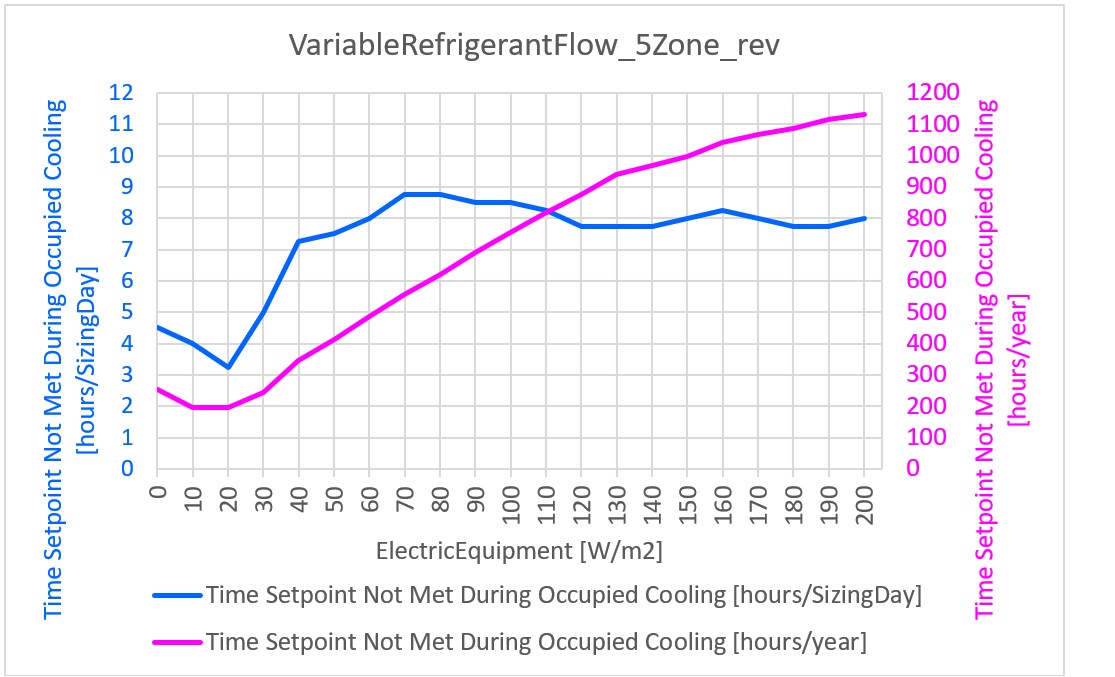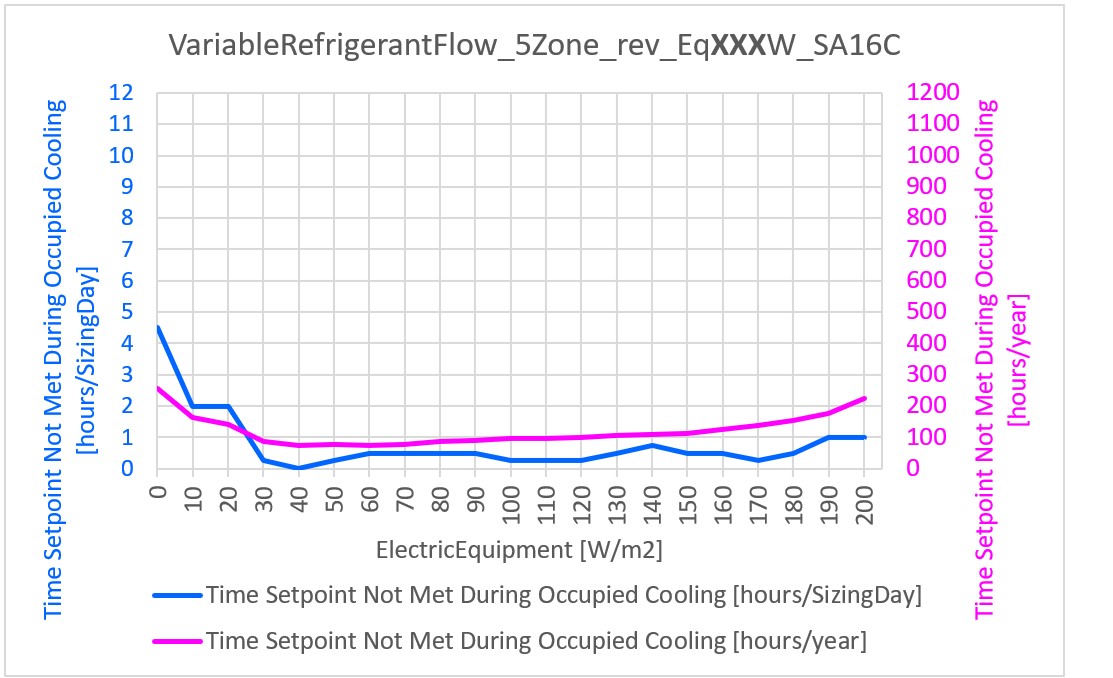A bug report. As the title says. I didn't notice the bug for a long time because usually I hardsize VRF. I reproduced the bug with the ExampleFile VariableRefrigerantFlow_5Zone.idf.
Each zone's ElectricEquipment in the example file is originally 10.76W/m2. I changed the equipment load by 10W/m2 from 0W/m2 to 200W/m2. These are not extreme cases. VRF is often used for air conditioning in transformer rooms with high equipment load as there is no risk of water leakage accidents.
Total cooling capacity, sensible heat ratio, heating capacity and air flow rate of VRF are autosized. The chart below shows unmet hours in the sizing run and in the annual run. The indoor cooling setpoint is 23.9C for 24 hours a day, year-round. The occupancy schedule is greater than 0 from 8:00 to 21:00 on a cooling design day and weekdays. Cooling Sizing Factor and Heating Sizing Factor are both 1, so a few unmet hours can occur in the cooling design day, but 8 unmet hours are too much. Autosizing is not working correctly. Annual unmet hours increase as equipment load increases.

I know DX cooling/heating coils have limits on the rated air volume flow rate per watt of rated total cooling/heating capacity i.e. it should be between 0.00004027m3/s/W to 0.00006041 m3/s/W (300 to 450 cfm/ton), but I don't think that's the essence of the bug. If the DX coil does not meet the indoor air setpoint during autosizing, EnergyPlus should iterate the sizing steps and increase both the rated air volume flow and the cooling capacity within the limits, but EnergyPlus does not do so.
I have done another case study. The original Zone Cooling Design Supply Air Temperture is 12.5C, and Zone Cooling Design Supply Air Humidity Ratio is 0.009kgWater/kgDryAir (100%RH) in the example file. I tried changing them to 16.0C and 0.0114kgWater/kgDryAir (100%RH). The result is as shown below. It looks auosizing is working correctly, but the supply air temperatures of VRF is usually not that high in reality.

All the idf files used for my case studies are here. For the simulation results, I have not uploaded all the output files due to the large file size. I have uploaded only html files and err files. The EnergyPlus version is V22-2-0.
My case studies above only suggests that autosizing for VRF does not seem to work correctly when the cooling supply air temperature difference is large and the equipment load is high. I hope the developers will investigate further.




